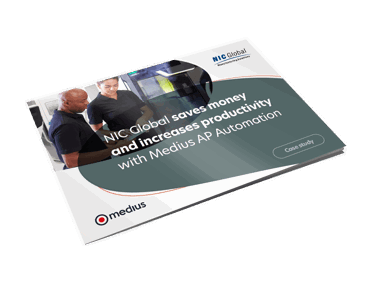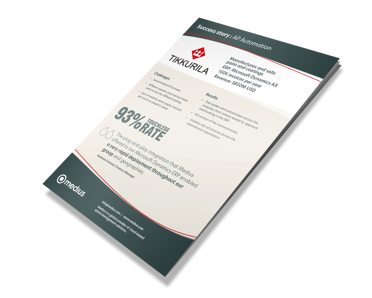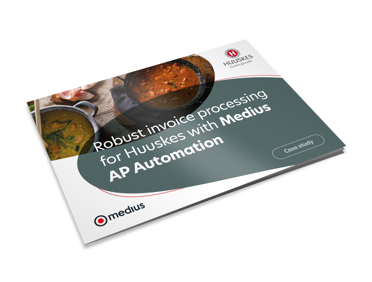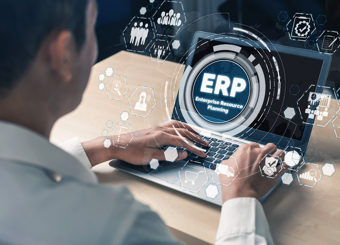

Overview
AP automation, or accounts payable automation, is the use of technology to digitize and streamline the invoice-to-payment process. It eliminates manual tasks like data entry and paper handling by using software to capture invoices, match purchase orders, route approvals, and execute payments—saving time, reducing errors, and improving visibility.
Modern AP automation goes far beyond simple invoice scanning. Today’s solutions leverage artificial intelligence and machine learning to identify discrepancies, detect fraud risks, and reduce exceptions before they disrupt workflows. With built-in controls and real-time insights, AP automation empowers finance teams to operate more strategically.
By replacing outdated processes with digital workflows, businesses can accelerate month-end close, strengthen compliance, reduce fraud exposure, and support remote or hybrid work environments. When integrated with your ERP and payment systems, AP automation becomes a core enabler of financial agility and operational resilience.

The problem with paper
Reducing paper saves money, time, and the environment.
Imagine coming into work to find a desk stacked feet high with paper or to a printer putting out piles of checks waiting to be signed and mailed. It's enough to make you want to quit on the spot — but it's a sight we see more often than not.
Figuring out where to start sometimes seems impossible. It overwhelms staff and is prone to error. Instead of spending precious brain-power trying to make a dent in the never-ending influx of paper — proactively eliminate it from the equation through accounts payable automation.
Disparate systems
If you've ever worked a job that required moving back and forth between multiple systems — you already know why this is a friction point.
An AP professional may have to pull or input information into these systems in a single day:
- Excel
- ERPs
- Banking systems
- Internal systems
- OCR or scanning systems
This practice creates an opportunity for mistakes that doesn't have to exist. All it takes is one typo in an excel sheet that is then entered into other systems to cause a domino effect of mistakes that will eat up time and burn through money to fix.
On top of that, finance departments could save 40% or more on costs by eliminating time-consuming manual report building and tracking.

How AP Automation works
AP automation replaces manual invoice and payment processes with an intelligent, end-to-end digital workflow. By integrating with your ERP and leveraging AI, it eliminates repetitive tasks, reduces risk, and delivers full visibility into your financial operations.
Here's how a modern AP automation process typically works:
Invoice capture
Invoices are received in any format—email, PDF, EDI—and automatically digitized. AI and machine learning extract key data from both header and line-item levels.
Validation and matching
The system matches invoice data to purchase orders, receipts, and contracts. Exceptions are flagged automatically for review, helping teams resolve issues quickly.
Approval workflow
Valid invoices are routed through a predefined approval process. Approvers can review and approve from any device, enabling decentralized and remote teams.
ERP Sync
Once approved, invoice data is synced with your ERP system in real time—ensuring consistency, accuracy, and audit readiness.
Payment execution
Payments are scheduled and issued based on your preferences—ACH, virtual card, real-time payments, and more—while maintaining full control and traceability.
This end-to-end automation eliminates bottlenecks, reduces fraud risk, and gives finance teams more time to focus on strategic priorities.
AI in AP automation
AI in AP automation uses artificial intelligence and machine learning to make the accounts payable process faster, smoother, and more efficient. Instead of relying on fixed templates or manual workflows, AI-powered systems learn, adapt, and improve over time, bringing businesses closer to true touchless invoice processing.
With AI, companies can move closer to touchless invoice processing, where invoices can flow automatically from data capture to payment, allowing AP teams to shift their focus to managing exceptions, optimizing cash flow, and strengthening supplier relationships.
Key capabilities of AI in AP automation:
AI-powered AP automation systems extract and validate invoice data from PDFs, email attachments, scanned documents, and electronic formats—without templates. These systems achieve high levels of accuracy, drastically reducing manual entry and enabling end-to-end automation.
AI-powered AP quickly recognizes patterns and formats, and learns from just a few invoice formats. With high confidence in the data, it routes invoices straight into processing, bypassing manual verification and speeding up the AP cycle.
AI predicts and auto-fills general ledger codes, tax classifications, and approvers for non-PO invoices. It helps improve accuracy and reduces errors automatically by suggesting the best approach.
AI looks out for anything unusual, like duplicate invoices, mismatched payment terms, or strange charges. By catching issues early, it helps reduce risk, prevent fraud, and simplify audits and compliance.
AI-powered assistants on AP platforms assist with tasks such as approvals, invoice validation, and exception handling. They understand natural language and provide real-time insights for faster, confident decisions.
AI automates supplier inquiries, offering real-time updates on invoices and payments through email or portals, reducing emails for AP teams and improving supplier transparency.
Electronic invoice automation simplifies and processes structured formats like XML, EDI, and PDF eInvoices, ensuring compliance with regional mandates.
AI in AP automates payment processing by approving trusted vendors automatically, improving cash flow and ensuring timely payments to key suppliers.
AI enhances expense reporting by detecting potential fraud and errors with precision. It flags out-of-policy expenses, duplicate receipts, and unusual amounts, ensuring stronger policy compliance and improved audit preparedness.
AI-powered platforms suggest settings or workflow changes to boost automation, often through conversational interfaces for easy implementation.
Stay compliant with global e-invoicing mandates and financial regulations
Regulatory compliance is no longer optional—it’s a moving target that continues to grow more complex, especially across international markets. AP automation helps businesses stay ahead of evolving e-invoicing mandates and financial regulations by enforcing structured processes, maintaining audit trails, and ensuring accurate, timely data.

Modern AP automation platforms support compliance by:
- Automatically capturing and validating invoice data in standardized formats
- Supporting mandatory e-invoicing frameworks (like PDP in France and EU eInvoicing standards)
- Generating detailed audit trails for every action taken on an invoice
- Enforcing approval hierarchies and role-based access controls
- Maintaining secure data storage and transmission in line with GDPR, SOC 2, and other standards
With the rise of government-mandated e-invoicing and digital tax reporting, businesses need tools that can adapt quickly to regulatory changes. Automation gives finance teams the confidence that their processes are not only efficient—but also audit-ready and compliant by design.
How does Accounts Payable
Automation benefit businesses?
- Provides improved visibility into spend
- Improves cash flow management
- Reduces risk of fraud
- Enhances control over how suppliers are paid
Want to find out how much your company could save with an AP Automation Solution? Try our Savings Calculator. Enter a few figures into our tool to see your potential savings. Compare your metrics against the average Medius customer to see how much you can save. Enter your data for immediate results, or download a custom report.


How does Accounts Payable Automation benefit departments?
Automated accounts payable systems help make AP departments successful by streamlining invoice processing. It enables:
- Efficient, accurate, and timely invoice processing.
- Improved time management, allowing AP Managers to spend less time on manual tasks and more time on work that adds strategic value to their business.
- Enables full visibility of invoices, spend and cash flow management to ensure AP teams can close the books on time, every time.
For a more in-depth look at the full range of benefits that AP automation technology provides, see our 10 Key Benefits of AP Automation blog.
Automation impact by role
The human side of accounts payable (AP) automation.

Accounts Payable Managers
- Automates invoice capture, matching, and routing to reduce manual workload
- Provides real-time visibility into invoice statuses and exceptions
- Streamlines month-end close with fewer delays and discrepancies
- Reduces vendor inquiries through automated status updates
IT Manager/CIO

IT & CIOs
- Reduces technical overhead with cloud-based deployment and minimal maintenance
- Enhances security with role-based access, encryption, and audit trails
- Simplifies ERP and payment system integrations via API or prebuilt connectors
- Scales easily without adding infrastructure or complexity

CFO & Controllers
- Delivers full visibility into cash flow, liabilities, and working capital
- Enables better forecasting and payment timing decisions
- Strengthens internal controls and audit readiness
- Reduces risk of fraud through automated checks and approvals
Digital payment methods: A smarter way to pay
One of the biggest benefits of AP automation is the ability to streamline and control how payments are made. Instead of relying on paper checks or manual bank transfers, automated AP platforms support a range of digital payment methods tailored to your business needs.
Common digital payment types include:
Low-cost, reliable options for domestic vendor payments.
Ideal for urgent or time-sensitive transactions with instant confirmation.
Single-use cards that increase security and can generate cash rebates on AP spend.
Best for high-value or international payments, though often more expensive.
Physical company cards for employee-initiated expenses, but less secure than virtual cards.
The right AP automation platform gives you the control to choose the optimal method for each payment—based on cost, speed, security, and vendor preference. It also creates a full audit trail and real-time visibility across every transaction.
Virtual cards: Secure payments that generate revenue
Virtual cards are single-use, 16-digit digital card numbers issued for specific vendor payments. As part of an automated AP workflow, they offer a secure, trackable, and efficient alternative to checks or wires—while generating financial value through cashback rebates.
Key benefits include:
- Built-in security: Single-use cards eliminate the risk of reuse, fraud, or theft. You set the amount, expiration, and vendor—all before the payment is issued.
- Streamlined workflows: No printing, mailing, or manual reconciliation. Virtual card payments integrate directly with your AP system and ERP.
- Rebate potential: Many companies earn up to 1% cashback on virtual card payments, helping offset software costs or turn AP into a revenue-generating function.
- Control and transparency: Every transaction is logged with full audit trails, making compliance and reporting effortless.
Unlike physical P-cards, virtual cards are fully digital, and because they are issued per transaction, they reduce misuse and simplify reconciliation. With the right AP automation platform, onboarding vendors and managing payments via virtual cards is fast, secure, and cost-effective.

Ready to turn AP into a revenue generator?
Discover how much your organization could earn by shifting to virtual card payments. Use our Savings Calculator to estimate your potential rebate—and see how payment automation can impact your bottom line.

How to easily automate AP
Most professionals agree that making a sweeping change in processes can be challenging which is why it's helpful to break it down into stages. Any task broken down into smaller steps is easier to imagine and implement.
Imagine you're going to organize your closet. Just looking at it, at the clothes cluttered together, the mysterious boxes stashed away, will leave you unsure where to start. You might even lose motivation to even attempt the project.
But when you break it down into easy steps — such as pulling everything out first, then separating what's trash, what's being donated, and what you're keeping — it's less intimidating. We're going to do the same thing with AP automation.
The natural place to begin is with automating payments. It's the first step to removing paper from your accounts payable department. It's also a quick turnaround — with the right accounts payable software, automating payments is a natural next step.
Removing paper via accounts payable payment automation results in:
- Faster processes & reduced bottlenecks
- Electronic payments replacing paper-burdened payment workflows
- Secure digital trails for taxes and audits
- Cost reduction and new revenue via virtual card rebates
Checks remain the most targeted payment method for fraud. By shifting your risky paper-based payments to digitally disbursed payment methods like ACH and virtual card transactions, you significantly reduce your chances of being the subject of a successful fraud attempt.
There's never been a better time for businesses to transform their payment processes through automation.
“There’s a misperception that receiving an invoice as a PDF document attached to an email is an electronic invoice,” says Katarina Anderson, VP of Capture at Medius. “That’s not the case. That PDF is probably still going to be printed out at some point.”
One of the outcomes of the Covid Pandemic was the requirement for employees to work remotely to avoid the risk of exposure. This shift has driven companies to scan and email invoices out to their clients.
This not only provides a false sense of digitization — and lulls you into the mistaken idea that you have adapted to the low touch economy — it leaves you vulnerable to fraud.
Many companies believe they have already automated invoices because they no longer mail out or receive paper versions. However, they still manually scan invoice into their systems and input data by hand. So, even though most invoices are received via email, they're still required to open the email and print the digital invoice. Reintroducing paper to the invoice process. Modern invoice software that enables invoice automation to free up your AP staff, and it's infinitely more secure. It will also save you time and money. There is a cost to antiquated invoice processes, and often, it's a convoluted workflow that leaves you open to errors.
Automating paying invoices & enabling remote AP will:
- Use AI and machine learning to automatically capture complex invoice details.
- Automatically capture and match Invoice header and line details to single or multiple purchase orders.
- Automatically route invoices along the workflow and only stop for exceptions.
- Allow access to your cloud-based AP system from any device anywhere.
AP automation works best when it complements your ERP, not competes with it. Medius integrates directly with your existing ERP to streamline invoice workflows, ensure accurate data sync, and maintain control over your financial operations.
With ERP integration, you can:
- Sync vendor, PO, and GL data automatically
- Post approved invoices back into your ERP with full audit trails
- Eliminate duplicate data entry and reduce errors
- Maintain visibility and control across all AP activity
Whether you're using Microsoft Dynamics, SAP, NetSuite, or another platform, Medius enhances your ERP with the automation, visibility, and scalability today’s finance teams require.
Automating your finance department doesn't mean throwing out everything you’ve worked on to start from a blank slate. It's possible, even preferable, to automate and maintain your current processes. Automation can take the tediousness out of your processes while allowing you to keep the effective parts in place.
It's never been easier to transform your payments process. Keep your current processes and digitize payments and invoices at no capital expense. Fully automated approval processes and out of the box best practices will revolutionize your department and ensure your team can survive and thrive even should another unpredictable event happen.

Enabling business continuity
Do you have an effective business continuity plan in place?
Many businesses didn't have an effective plan in place when the COVID-19 pandemic hit and had to scramble to find ways to accommodate their workforce move to remote environments.
The band-aid solutions included: off-site check printing, sending printers home with staff, and scanning and emailing invoice to vendors. These half-measures will work in a pinch, but are untenable in the long term.
Transform paper invoicing and payments into e-invoices and ePayments
Paper is inherently an issue for a business continuity plan. Physical invoices, checks, and the tools involved in those processes tether staff to the office. It can put your finance team in a position where they're taking printers and boxes full of paper home with them if, or more like when, the next big event occurs that requires us to quickly adapt to a new way of working.
With studies predicting periodic stay-at-home orders and the workforce largely happy working remotely — businesses need to lose paper in favor of electronic invoices and payments.
Digitizing your invoices and payments is the first, and most essential, step towards having an effective business continuity plan in place.

Activate offsite and decentralized processes
The large majority of people who have shifted to work from home have stated they want to continue doing so for the rest of their career, at least part of the time. Making offsite and decentralized processes not only allow your finance staff to work from wherever they want, it also has benefits for your current and prospective vendors.
This is done by:
Providing adequate office space for social distancing
Utilizing electronic solutions that operate remotely
Converting to electronic invoices and electronic payments
Allowing remote approval processes The Value of No-Touch Payments for AP

Approve invoices with the click of a button
Antiquated invoice processes are no longer a workable option. Digital payable platforms and invoice automation enable you to approve invoices on any device that has access to the internet.
Individuals and companies alike are looking to decrease their high touch processes in favor of low touch, with the goal of moving to autonomous processing - meaning only need to deal with exceptions. These processes allow them to complete purchases from the comfort of their home. Don't be late in joining the new high-tech economy!
Make payments from your breakfast table or boardroom
The ability to complete processes from anywhere is crucial for more than just invoices. It's also important to have the capability to process payments from wherever you or your finance staff are. Payment automation not only makes this possible, it also takes over the more tedious and mundane aspects of your workflow.
Having the flexibility to allow staff to choose where they're making payments from will also make your business more competitive when you're scouting for new talent. According to a new poll, 50% of professionals would trade a pay cut to keep working from home.


Allow 24/7 access to AP statuses
What's one of the biggest time wasters in an Accounts Payable (AP) office?
If asked, most would say it's fielding calls and emails from vendors for status updates.
A portal that allows your staff to have 24/7 access to the accounts payable process and statuses will not only make their daily tasks easier. It will also cut down on vendors asking for updates since they will also have transparent access to the portal.
This is essential for any business continuity plan since it allows around the clock updates for your staff and vendors. It will also make everyday life easier, even when you're not actively using your back-up plan. Having it place in the event of a crisis is what's motivating businesses to make the change now, but it will pay dividends even before such an event occurs.
How to select an accounts
payable automation software?
When looking to automate accounts payable, companies should carefully research different accounts payable automation solutions to find the best fit. It is critical that the accounts payable automation software selected can support all invoice processing use cases required by the business to ensure end to end automation of AP processing and hard savings in time and cost. Learn more about our AP Automation solution.
In addition, it is important to understand how the AP automation software integrates with a company’s ERP to ensure synchronization of data and a streamlined processing. ERP integration makes it possible to transfer master data from the ERP to the AP solution. AP automation solutions generally offer a range of ERP integrations from pre-packaged to fully managed connectors. Learn more about ERP integrations.

Finding the perfect fit in AP Automation
Selecting the best automated accounts payable system requires more than a surface-level understanding; it demands a deep dive into accounts payable automation solutions. This comparative analysis offers a closer look at specific factors to consider for the best accounts payable automation software for your organization.
Cloud-based vs. On-premises solutions
Cloud-based solutions offer scalability and ease of access, ideal for businesses seeking flexibility and lower initial costs. On-premises solutions, meanwhile, provide greater control over data and can be more extensively customized, suited for organizations with specific security and infrastructure requirements.
Integration capabilities beyond ERP
Beyond ERP integration, it's crucial to consider how an AP solution integrates with your entire financial ecosystem. This includes compatibility with other financial management tools, ensuring a cohesive and streamlined workflow throughout your organization's financial operations.
Customization and scalability for unique needs
Each business has its unique processes and growth trajectory. A solution that offers robust customization and scalability ensures that as your business evolves, your AP automation solution adapts, maintaining operational efficiency and supporting your growth.
User experience and support
Finally, the user experience and the level of support offered are vital. A solution that is intuitive and backed by comprehensive customer support guarantees a smoother transition, higher adoption rates, and ultimately, a more successful implementation.
Choosing the right AP automation solution is a critical decision that impacts your business's operational efficiency and financial health. Carefully considering these detailed factors, and for a more comprehensive guide, be sure to check out our in-depth blog post on choosing the best AP automation software.
Smooth sailing: Best practices for implementing AP Automation
Transitioning to an AP automation solution is a transformative step towards more efficient financial operations. To ensure this transition is successful, it's essential to approach implementation with a well-thought-out plan and clear strategy.
Comprehensive planning and assessment
Understanding your current AP processes is the foundation of a successful implementation. Evaluate your existing workflows, identify inefficiencies, and define clear objectives for what you aim to achieve with automation. This assessment will guide you in customizing the automation solution to best fit your business needs.
Choosing the right implementation partner
The right implementation partner can make a significant difference. Look for a partner with expertise in AP automation and a deep understanding of your specific industry challenges. Their experience can provide invaluable insights and guidance, ensuring a smoother transition.
Training and change management
Effective implementation is as much about people as it is about technology. Comprehensive training for your team is crucial to ensure they are comfortable and proficient with the new system. Equally important is managing the change process - addressing concerns, encouraging adoption, and creating a culture that embraces new ways of working.
Data migration and system integration
Migrating your data to the new system requires meticulous planning to ensure accuracy and integrity. It's also important that the AP automation solution integrates seamlessly with your existing ERP and financial systems. This integration is key to maintaining consistency across your financial operations.
Testing and feedback
Prior to full deployment, rigorously test the system with real-world scenarios and gather feedback from users. This testing phase is critical to identify any issues and make necessary adjustments, ensuring the system functions as intended and meets user needs.
Implementing an accounts payable automation system can significantly enhance your financial operations, but it requires careful planning and execution. By following these best practices and preparing your team for the transition, you can ensure a smooth implementation and fully leverage the benefits of your AP automation solution.
Bringing theory to practice:
Case studies in AP Automation
AP automation transcends various industries, offering solutions that address unique business challenges. The following case studies highlight the transformative impact of AP automation solutions, demonstrating their practical benefits in diverse settings.
NIC Global – Manufacturing Industry
- Challenge: NIC Global faced challenges in their AP department due to manual processing of a high volume of vendor invoices.
- Solution: Implementing Medius AP Automation led to a digital transformation, ensuring timely invoice payments and reducing error rates.
- Results: Significantly reduced costs, improved efficiency with digital invoice routing, and an increase in weekly invoice processing capacity without additional staff.
Tikkurila – Paint and Coatings Manufacturer
- Challenge: Tikkurila needed to gain control over a decentralized AP process with various manual tasks across different entities.
- Solution: Adopted Medius for a rapid deployment that worked seamlessly with their Microsoft Dynamics ERP, aiming for a uniform AP process.
- Results: Achieved a 93% touchless rate on invoices and gained transparency and efficiency in their AP process.
Huuskes – Food and Beverages Supplier
- Challenge: Huuskes struggled with manually matching a large volume of invoices, affecting efficiency.
- Solution: Partnered with Medius for a digital transformation, making the AP Automation solution accessible across the organization.
- Results: Within nine months, two-thirds of invoices were processed without intervention, leading to enhanced confidence in financial data integrity and standardized AP operations.
These case studies from NIC Global, Tikkurila, and Huuskes provide compelling evidence of how AP automation can revolutionize business operations. They showcase the versatility and efficacy of AP automation solutions in improving efficiency, accuracy, and financial management across different industries.
Looking for more AP Automation resources?
Here are some tools that might be useful as you explore if an AP Automation solution is right for your business.
AP Benchmark Report
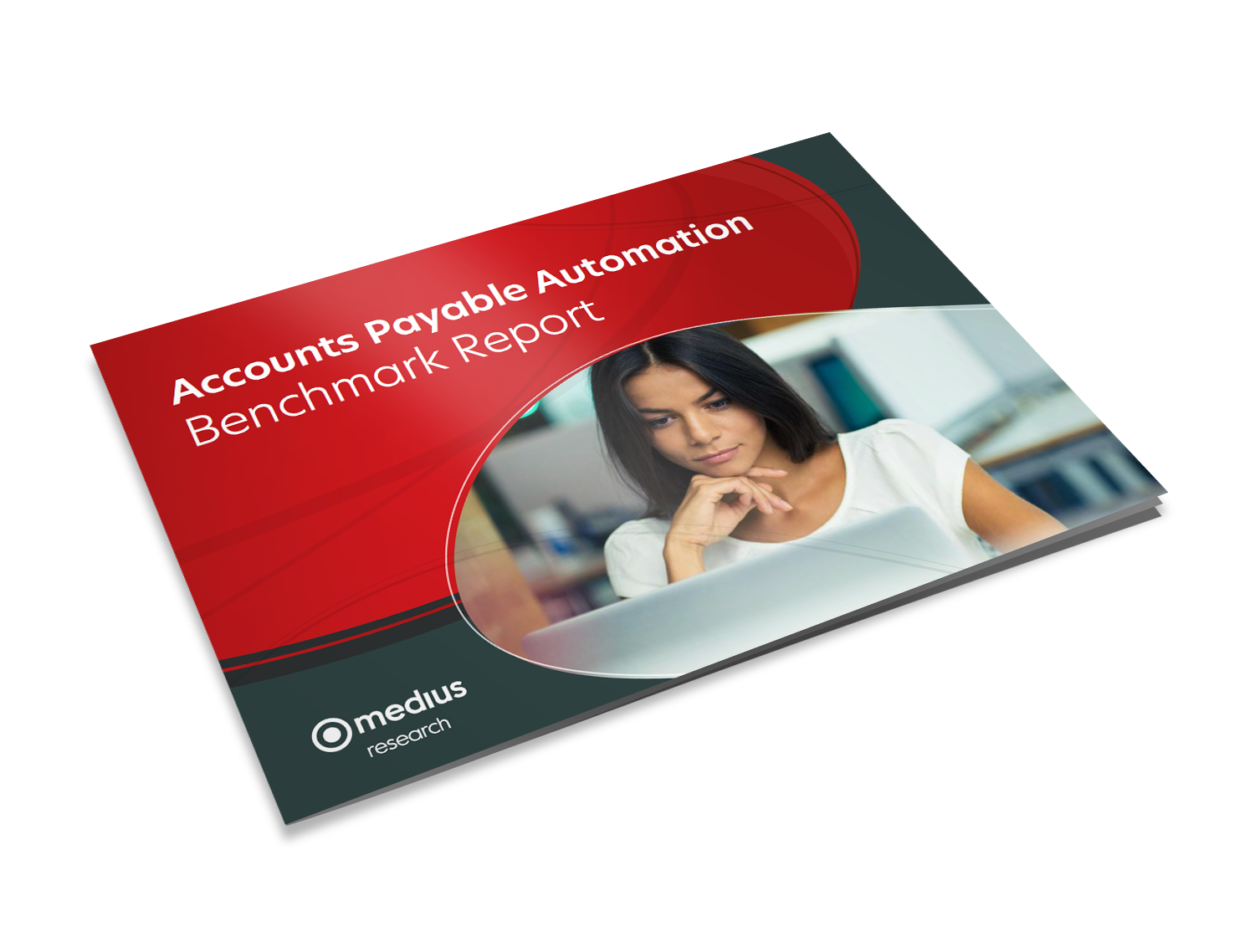
This report includes everything you need to know about the accounts payable process, the efficiency KPIs to measure and the latest AP benchmarks.
Financial Census Report
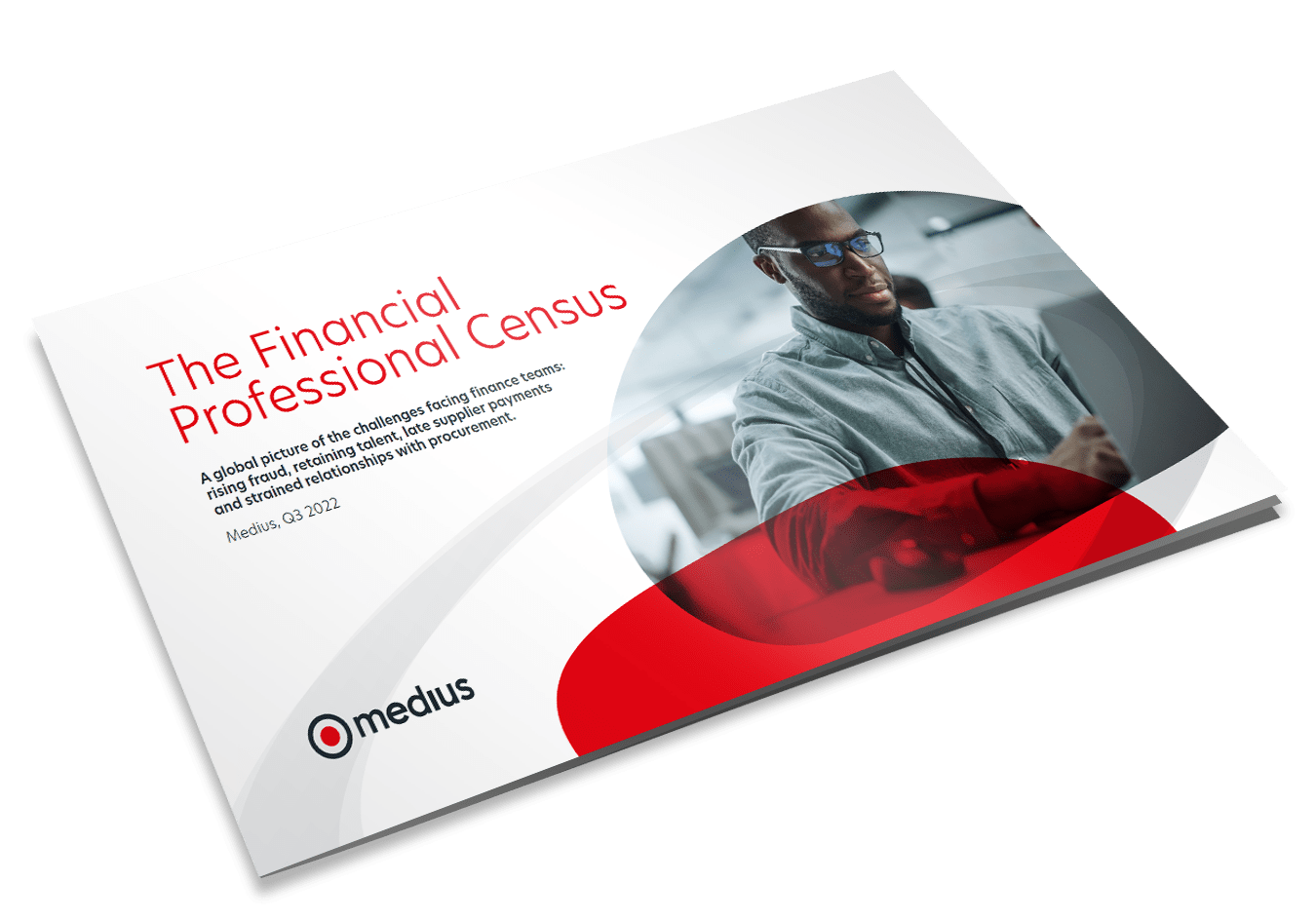
Learn about common hurdles facing financial professionals today, and how to overcome them. Get an in-depth look at the impact of fraud, late supplier payments, communication practices in Finance departments, and job satisfaction for Finance professionals.
Ardent Partners 2023 ePayables Technology Advisor
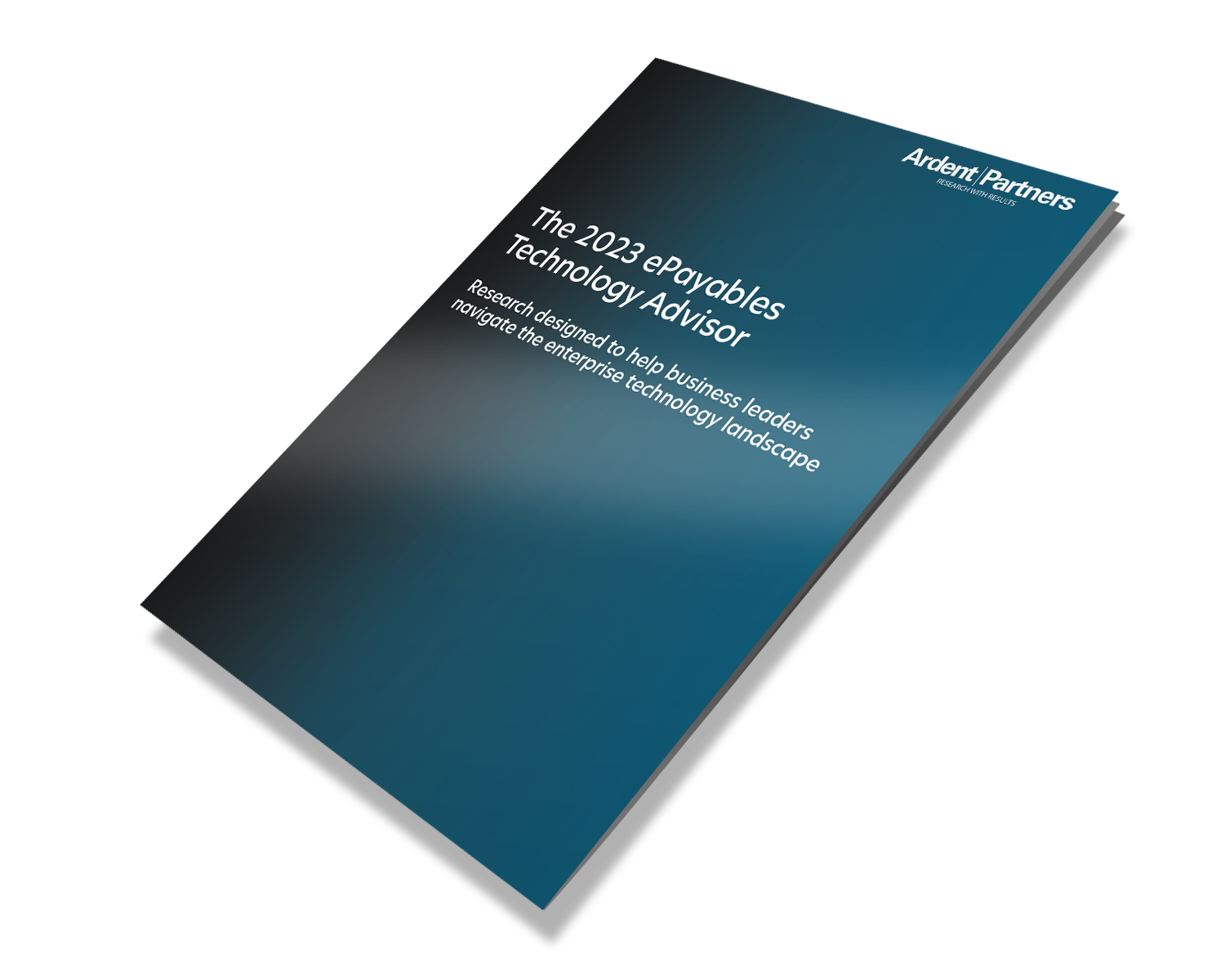
Navigating the market of AP vendors can be overwhelming. Download the 2023 Ardent Partners' ePayables Technology Advisor report, courtesy of Medius, to help make the right decision for your organization.
AP Automation Savings Calculator

Find out how much you could save with AI-driven Accounts Payable Automation. Start by answering a few simple questions about your current AP and Finance processes, then get a customized report of what you can expect when you trade manual work for modern, intelligent technology.
Explore our insights: Expert blogs on AP Automation
Dive deeper into the world of accounts payable automation with our curated selection of expert blogs. Each blog offers a unique perspective, shedding light on various aspects of AP automation. From practical tips to industry insights, our blogs are designed to keep you informed and ahead of the curve.
FAQs: Your questions about AP Automation answered
AP Automation refers to the use of technology to streamline and automate the accounts payable process, reducing manual effort and increasing efficiency. It involves converting invoices into digital format, automatically matching them to purchase orders, and processing payments, often integrated with existing financial systems.
Automating your accounts payable process can significantly reduce manual errors, speed up invoice processing, enhance data accuracy, and improve overall financial management efficiency. It allows for better cash flow visibility and frees up your finance team to focus on strategic tasks rather than repetitive, manual work.
AP Automation solutions typically integrate seamlessly with existing ERP systems, facilitating data synchronization and consistent financial record-keeping. This integration ensures that invoice data automatically updates in the ERP system, maintaining a single source of truth for financial data.
When selecting an AP Automation solution, consider factors such as ease of integration with existing systems, user-friendliness, scalability, data security features, customization options, and the level of customer support offered.
AP Automation ensures timely and accurate payments to vendors, enhancing trust and reliability. It also provides better communication and transparency, allowing for quicker resolution of disputes and a more collaborative relationship with suppliers.
Yes, cloud-based AP Automation solutions are typically secure, employing advanced encryption, regular security audits, compliance with data protection regulations, and backup systems to protect financial data.
The implementation time for an AP Automation system varies but typically ranges from a few weeks to several months, depending on the complexity of the system, the level of customization required, and the size of the organization.
Yes, AP Automation can significantly aid in regulatory compliance by ensuring accurate and timely financial records, maintaining a clear audit trail, and adhering to various financial standards and regulations.
AP Automation streamlines and automates many tasks that are manually performed in traditional AP processes, such as data entry and invoice matching. This leads to faster processing, reduced errors, improved data accuracy, and better financial oversight.
AP Automation provides real-time visibility into financial obligations and available funds, allowing for more effective cash flow management. It enables businesses to optimize their payment timings, negotiate better payment terms, and make informed financial decisions.
Modern AP Automation systems are equipped to handle transactions in multiple currencies and manage payments to international suppliers efficiently. They automatically account for currency conversions and comply with global financial regulations.
AP Automation solutions can generate a variety of reports, including accounts payable aging reports, cash flow analysis, vendor payment histories, expense reports, and compliance reports, providing valuable insights into financial operations.
AI and machine learning enable AP automation to extract invoice data, match it to POs, and flag errors or anomalies automatically. The system learns from past behavior to reduce exceptions, improve accuracy, and streamline approvals—resulting in faster, more touchless invoice processing over time.
Yes. Modern AP automation platforms support global compliance standards, including France’s PDP model, EU eInvoicing directives, and other country-specific mandates. They ensure invoices are validated, formatted correctly, and transmitted through compliant channels—keeping your business audit-ready across all regions.
Yes. Leading AP automation solutions integrate with multiple ERPs—including Microsoft Dynamics, SAP, NetSuite, and legacy systems—to centralize invoice workflows. This allows businesses to automate AP processes without disrupting existing infrastructure or operations.
